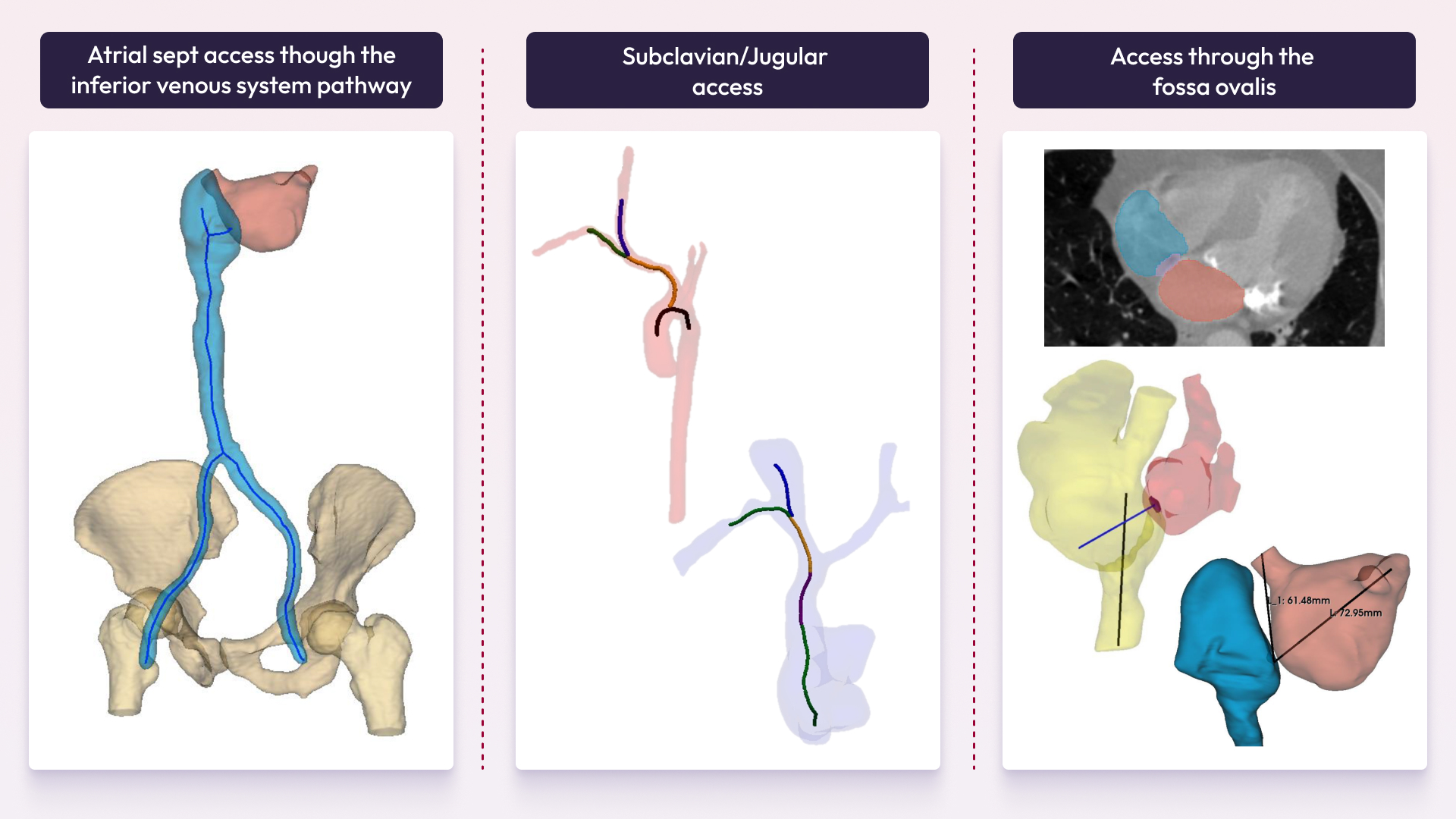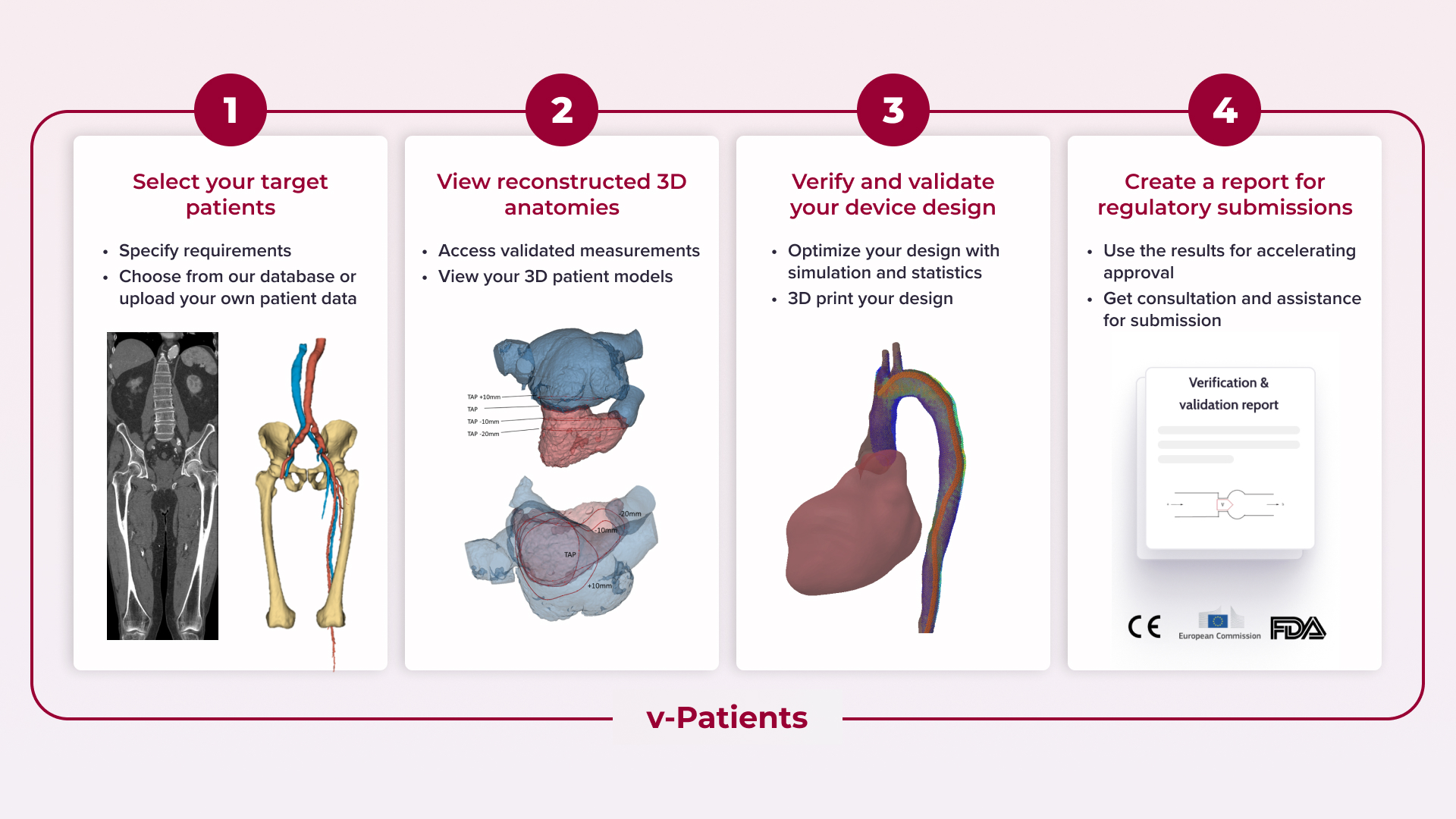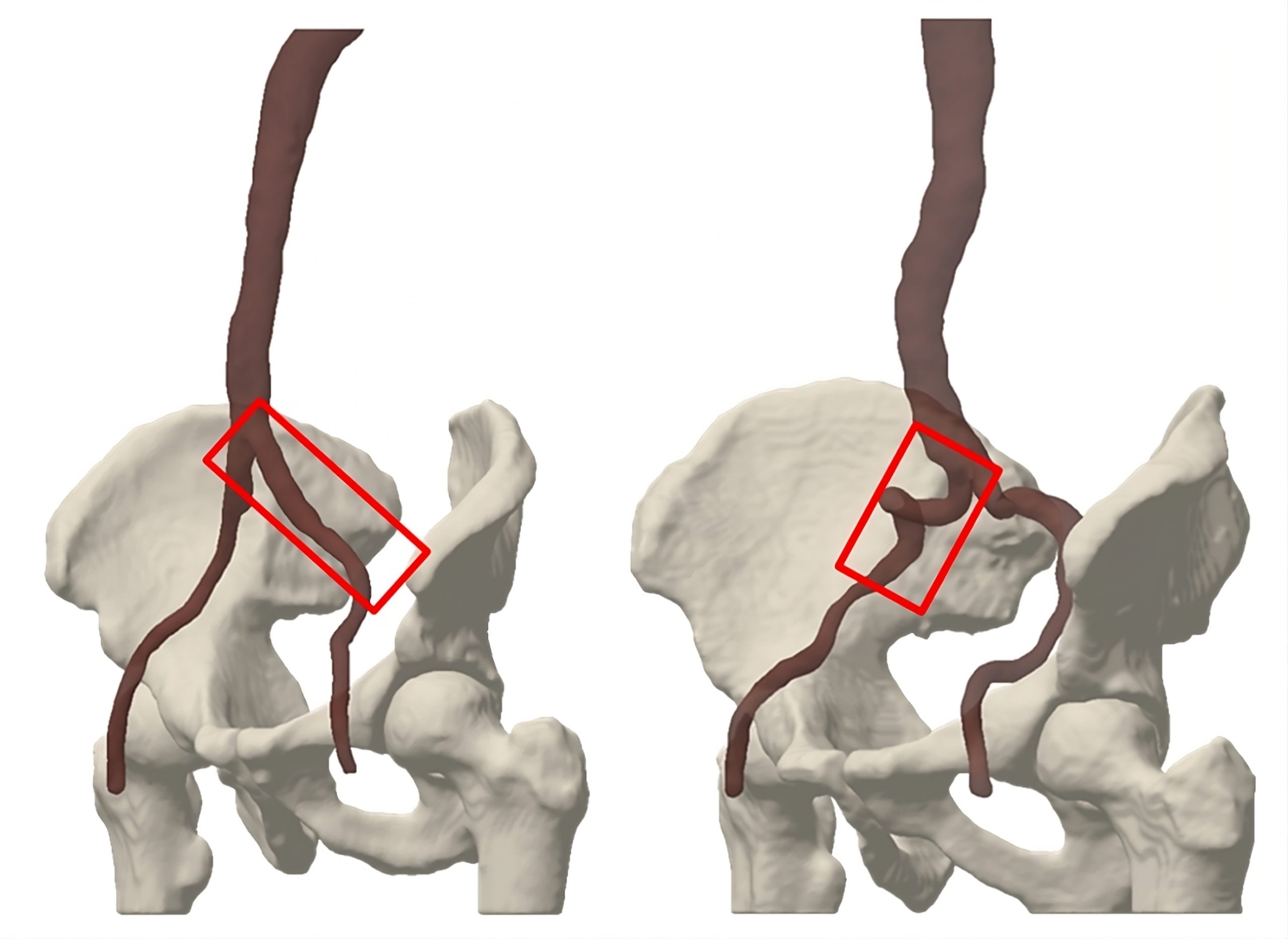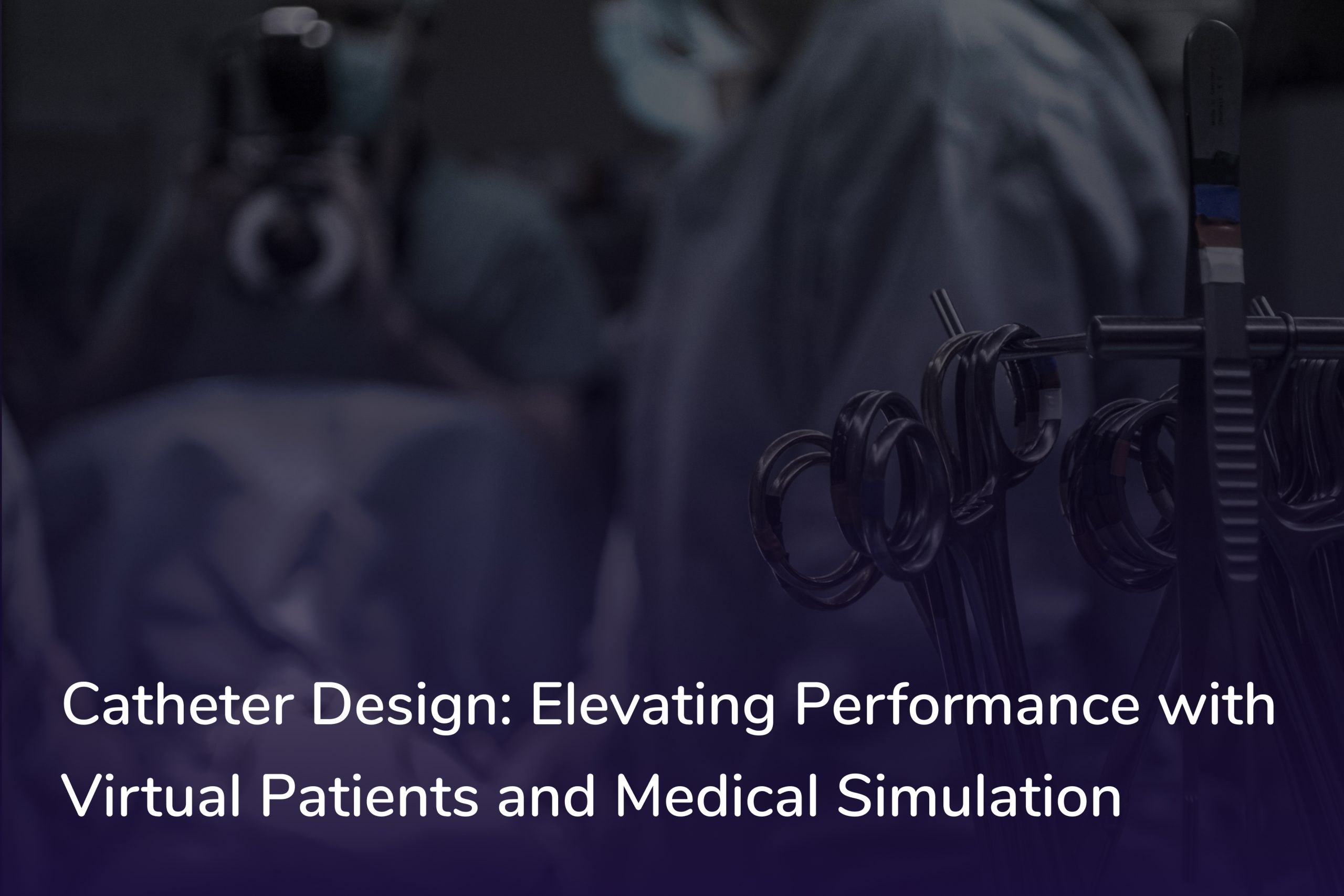Introduction to Cardiac Catheterization and Its Importance
Cardiac catheterization is a cornerstone of cardiovascular intervention, and the gold standard for minimally invasive access to the heart. It is, therefore, suitable for all kinds of applications such as stent placement in the cardiac system, valve replacement or treatment of ventricular fibrillation. The access route through which the catheter is inserted into the heart depends on the procedure and the patient’s physiology. Possible access routes include the iliofemoral veins via the inferior vena cava into the right atrium, or the fossa ovalis into the left atrium. Access can also be gained caudally through the subclavian veins and superior vena cava. Similarly, the heart can also be reached via the arterial system. Based on the the different access routes, the catheter design also has to be optimized.

Challenges in Current Catheter Procedures
With over 1,000,000 procedures performed annually in the U.S. alone, cardiac catheterization is one of the most performed cardiac interventions in general. Thanks to recent advancements in technology and improved physician skills, the risk of complications for patients has significantly decreased in the last few years. However, it is important to note that complications can still occur during the intervention, such as:
- Hematoma/Retroperitoneal Bleeding
- Pseudoaneurysm
- Arteriovenous Fistula
- Dissection
With the emergence of new in silico methods such as digital twins and medical simulations, we now have exciting opportunities to gain an even better understanding of the anatomy of large patient cohorts. This way, we are able to optimize catheter design and, most importantly, to decrease risks for patients.
If you are not familiar with the term ‘in silico’, read this post: In Vivo, In Vitro, In Silico Methods
Using Virtual Patients and Medical Simulations in Catheter Design
In this blog post, we will explore a common scenario that arises during each new design iteration of a catheter: What are the maximum requirements in terms or flexibility of the material of the insertion cannula to be used safely in everyday clinical practice?
To tackle this, we start by selecting a target patient cohort, depending on the specific requirements coming from the customer. For example, there may be a focus on pediatric patients or patients with a pre-existing condition, such as patients with a specific type of heart valve failure.
Then, in the second step we reconstruct the anatomies of individual patients to create highly accurate patient-specific models, and perform measurements on them according to the desired design criteria. Reconstructions and measurements are always validated by our medically trained experts to ensure the highest accuracy for all patient-specific models.

Key Metrics for Catheter Design Optimization
A particularly important and illustrative metric, in our example, is the tortuosity of the catheter pathways. Tortuosity is a flexibility metric that measures the ratio between the effective pathway length and the Euclidean distance of the catheter pathway endpoints. The effective pathway length is the actual distance the catheter must traverse within the blood vessel, i.e., the distance along the vessel’s centerline. Patients with highly tortuous venous or arterial systems can be challenging to cannulate, because the catheters must be much more flexible to avoid damaging the blood vessels by overstretching (see Figure 3). By determining the tortuosity for all patients in our cohort, we can identify both average and extreme patients. This will allow us to confidently determine the requirements for the catheter design.

Other metrics that may be important for design planning are section lengths, cross-sectional metrics (diameter, circumference, …), or the degree of calcification in the arterial system, as this has a strong influence on the flexibility of the vessel.
Once we identify the most extreme patient anatomy and, consequently, determine the necessary design parameters, we continue with device verification and validation to ensure compliance with safety and efficacy standards. This can be accomplished by 3D printing the specific anatomy and performing physical tests. Going one step further, our unique expertise allows us to virtually simulate the entire cannulation process and determine other parameters such as insertion and contact forces, ensuring optimal device performance and patient safety. You can simply upload your catheter design and test its fit against large patient cohorts.
To learn more about medical simulation, please take a look here: Aortic Valve Benchtop Done In Silico Using Medical Simulation
Finally, we work closely with the regulatory bodies to ensure full compliance and provide comprehensive support in reporting study results.
Benefits of Virtual Patient Technology and Medical Simulation
What can we support you with:
- Providing patients with diverse pathological conditions relevant for your use-case
- Accurate and validated measurements of different parameters, such as tortuosity
- A virtual environment to test the device fit – simply upload your device design and implant it into the 3D models of your patients
- Simulation of the whole cannulation process
- Reports you can use for regulatory purposes
- Consultation at every step to help you analyze the results of the measurements, or simulation
Introduction of digital twin technology, patient-specific models, and medical simulation helps advance and speed-up catheter design and save you time and costs by reducing the number of iterations. By harnessing these advancements, you can deliver superior patient care while leveraging new innovative methods in cardiovascular interventions.
If you need more detailed information on how Virtonomy can assist you with a new iteration for a catheter design, please feel free to contact us. We are always happy to help and provide you with the best possible solutions.
References
- Manda, Y. R., & Baradhi, K. M. (2023). Cardiac Catheterization Risks and Complications. In StatPearls. StatPearls Publishing. (https://pubmed.ncbi.nlm.nih.gov/30285356/)
Frequently Asked Questions
How does digital twin technology contribute to improving catheter design?
Digital twin technology enables the creation of 3D virtual patient models, allowing for precise customization of catheter designs based on individual patient characteristics. This technology facilitates thorough analysis and optimization of catheter performance before physical prototypes are manufactured, reducing development time and costs while improving efficacy.
How do flexibility metrics, such as tortuosity, impact the design and performance of catheters?
Flexibility metrics like tortuosity measure the curvature and tortuosity of blood vessel pathways. High tortuosity indicates more complex pathways, requiring catheters with increased flexibility to navigate safely. Designing catheters with appropriate flexibility ensures minimal risk of vessel damage during insertion, enhancing safety and efficacy.
How can in silico methods support me in regulatory submissions and compliance?
Regulatory compliance ensures that medical devices, including catheters, meet safety and efficacy standards mandated by regulatory bodies. Compliance involves rigorous testing, verification, and validation processes to ensure that devices perform as intended and pose minimal risk to patients. Many of these tests can be performed with in silico methods, and FDA already accepts digital evidence such as medical simulation and benchtop tests as part of the documentation needed for regulatory approval. If you want to know more, read our blog post here: Aortic Valve Benchtop Done In SIlico using Medical Simulation
What are the potential benefits of using virtual medical simulations in catheter design?
Virtual simulations offer several benefits in catheter design, including cost and time savings, enhanced design iteration capabilities, and improved understanding of device performance in diverse patient anatomies. By simulating catheter insertion, contact forces, and fluid dynamics, medical device developers can optimize device designs for maximum efficacy and patient safety.

